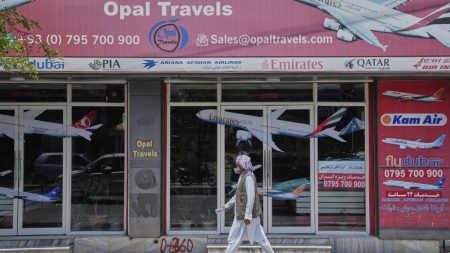The European aviation sector has experienced a remarkable resurgence in 2023, rebounding strongly from the impact of the COVID-19 pandemic. A staggering 973 million passengers traveled within or out of the European Union, signaling a robust recovery and renewed enthusiasm for air travel. This surge in passenger numbers reflects a growing desire for both leisure and business travel, indicating a return to normalcy in the post-pandemic era. The growth was remarkably widespread, with every EU member state recording an increase in passenger traffic compared to 2022, demonstrating a continent-wide trend.
Interestingly, the data reveals a significant shift in travel patterns. Europeans are increasingly venturing beyond the EU’s borders, with 49% of passengers opting for extra-EU destinations in 2023. This surpasses the 36% who traveled within the EU and the mere 15% who flew domestically. This trend suggests a growing global interconnectedness and a desire for diverse travel experiences beyond the familiar European landscape. The increased accessibility of international flights and potentially favorable economic conditions may also contribute to this outward-focused travel pattern. Furthermore, the data highlights the enduring popularity of air travel as a primary mode of transportation for both short and long-haul journeys.
Among the bustling airports within the EU, Paris Charles de Gaulle Airport emerged as the busiest, accommodating 67 million passengers in 2023. Amsterdam’s Schiphol Airport followed closely with 62 million passengers, while Madrid’s Barajas Airport handled 60 million. Although not within the EU anymore, London Heathrow Airport retained its position as the most crowded airport in Europe, serving a massive 79 million passengers. This reflects London’s continued importance as a major international hub for air travel, connecting passengers from across the globe. The high passenger volumes at these major airports underscore the crucial role they play in facilitating international trade, tourism, and cultural exchange.
The resurgence in air travel was particularly pronounced in certain EU member states. Malta registered a remarkable 33.3% increase in passenger traffic compared to 2022, followed by Slovenia at 30.9% and the Czech Republic at 29.4%. The average increase across the EU was a substantial 19%, showcasing the widespread recovery of the aviation sector. Other European countries outside the EU also witnessed significant growth, with North Macedonia seeing a 47% surge and Serbia experiencing a 38% increase. These figures suggest a burgeoning demand for air travel across the continent, driven by various factors including economic growth, increased tourism, and improved connectivity.
Analyzing the destinations chosen by EU passengers traveling outside the bloc reveals some interesting insights. A significant portion, 57.1%, opted for other European countries not part of the EU, highlighting the close ties and travel links within the broader European region. For intercontinental travel, North America emerged as the most popular destination, attracting 11.1% of extra-EU travelers. West Asia followed with 9.4%, North Africa with 8.8%, and South America with 3.1%. These figures reflect the diversity of travel interests among European passengers, spanning leisure travel, business trips, and potentially visiting friends and family abroad.
The remarkable recovery of the European aviation sector in 2023 signals a positive shift towards post-pandemic normalcy and underscores the enduring importance of air travel in a globalized world. The increasing trend of extra-EU travel reflects a desire for broader international experiences, while the growth in passenger numbers across various European countries indicates a healthy and expanding aviation market. The high passenger volumes at major airports highlight their crucial role as gateways to international connectivity, and the varying destination choices reveal the diverse travel interests of European passengers. This resurgence in air travel is likely to have significant economic implications, boosting tourism, trade, and cultural exchange across the globe.










